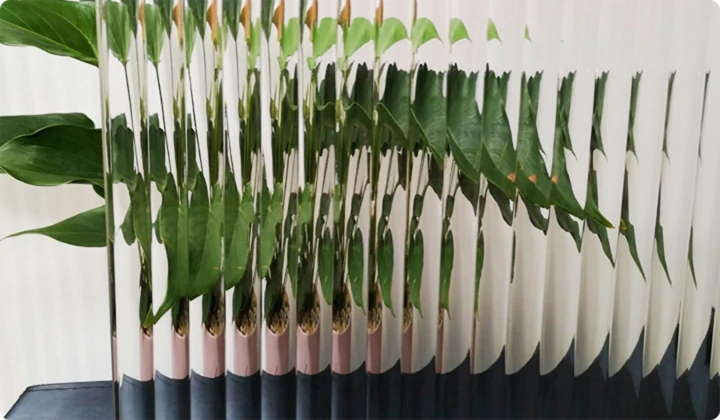Understanding Mirror Cutting Costs Factors and Considerations
When it comes to designing and decorating spaces, mirrors have become essential elements that not only enhance aesthetics but also create an illusion of space and light. However, the process of cutting mirrors, while seemingly straightforward, can incur various costs that clients should consider. Understanding the factors influencing mirror cutting costs can help you make informed decisions, whether for home decor or commercial use.
1. Size and Thickness of the Mirror
The most significant factor affecting the cost of mirror cutting is the size and thickness of the piece being cut. Larger mirrors require more material, which increases the base cost. Additionally, thicker mirrors demand specialized tools and techniques for cutting, hence elevating labor and equipment expenses. A standard 1/4-inch thick mirror is generally more affordable to cut than a 1/2-inch or 3/4-inch mirror, impacting the overall budget.
2. Type of Finish
Mirrors come with different finishes and edges, including beveled, polished, and sandblasted options. Each finish requires distinct cutting techniques and tools, which can influence the final price. For instance, beveled edges necessitate additional precision during cutting, leading to higher labor costs. Clients should consider the type of edge finish they desire, as it can substantially affect the overall budget.
3. Design Complexity
mirror cutting cost
Customized shapes and sizes can significantly impact cutting costs. A simple rectangular or circular mirror is generally less expensive to cut than an intricately designed or uniquely shaped mirror. Custom designs demand specialized skills and tools, which can result in higher labor charges. It’s vital for clients to communicate their design aspirations clearly to get accurate pricing and avoid unexpected expenses.
4. Volume of Order
When dealing with larger projects, such as commercial installations or bulk orders for a business or event, the cost per piece might decrease due to economies of scale. Suppliers often provide discounts for larger orders, which can lead to substantial savings. However, it’s essential to balance quality with quantity, ensuring that the desired characteristics of the mirrors are maintained throughout the order.
5. Location and Labor Costs
Finally, the geographical location and labor market conditions can also affect mirror cutting costs. In urban areas with higher living costs, prices for cutting and installation services may be elevated. It’s always beneficial to gather multiple quotes from local suppliers and installers to ensure competitive pricing without compromising quality.
Conclusion
In summary, understanding the factors that influence mirror cutting costs can help clients navigate their purchasing process effectively. By considering the size, thickness, design complexity, finish type, order volume, and location, clients can better manage their budgets and ensure the acquisition of mirrors that enhance their spaces while staying within financial constraints. Whether for personal use or business needs, being informed is key to a successful mirror purchase.
 Afrikaans
Afrikaans  Albanian
Albanian  Amharic
Amharic  Arabic
Arabic  Armenian
Armenian  Azerbaijani
Azerbaijani  Basque
Basque  Belarusian
Belarusian  Bengali
Bengali  Bosnian
Bosnian  Bulgarian
Bulgarian  Catalan
Catalan  Cebuano
Cebuano  Corsican
Corsican  Croatian
Croatian  Czech
Czech  Danish
Danish  Dutch
Dutch  English
English  Esperanto
Esperanto  Estonian
Estonian  Finnish
Finnish  French
French  Frisian
Frisian  Galician
Galician  Georgian
Georgian  German
German  Greek
Greek  Gujarati
Gujarati  Haitian Creole
Haitian Creole  hausa
hausa  hawaiian
hawaiian  Hebrew
Hebrew  Hindi
Hindi  Miao
Miao  Hungarian
Hungarian  Icelandic
Icelandic  igbo
igbo  Indonesian
Indonesian  irish
irish  Italian
Italian  Japanese
Japanese  Javanese
Javanese  Kannada
Kannada  kazakh
kazakh  Khmer
Khmer  Rwandese
Rwandese  Korean
Korean  Kurdish
Kurdish  Kyrgyz
Kyrgyz  Lao
Lao  Latin
Latin  Latvian
Latvian  Lithuanian
Lithuanian  Luxembourgish
Luxembourgish  Macedonian
Macedonian  Malgashi
Malgashi  Malay
Malay  Malayalam
Malayalam  Maltese
Maltese  Maori
Maori  Marathi
Marathi  Mongolian
Mongolian  Myanmar
Myanmar  Nepali
Nepali  Norwegian
Norwegian  Norwegian
Norwegian  Occitan
Occitan  Pashto
Pashto  Persian
Persian  Polish
Polish  Portuguese
Portuguese  Punjabi
Punjabi  Romanian
Romanian  Russian
Russian  Samoan
Samoan  Scottish Gaelic
Scottish Gaelic  Serbian
Serbian  Sesotho
Sesotho  Shona
Shona  Sindhi
Sindhi  Sinhala
Sinhala  Slovak
Slovak  Slovenian
Slovenian  Somali
Somali  Spanish
Spanish  Sundanese
Sundanese  Swahili
Swahili  Swedish
Swedish  Tagalog
Tagalog  Tajik
Tajik  Tamil
Tamil  Tatar
Tatar  Telugu
Telugu  Thai
Thai  Turkish
Turkish  Turkmen
Turkmen  Ukrainian
Ukrainian  Urdu
Urdu  Uighur
Uighur  Uzbek
Uzbek  Vietnamese
Vietnamese  Welsh
Welsh  Bantu
Bantu  Yiddish
Yiddish  Yoruba
Yoruba  Zulu
Zulu 

